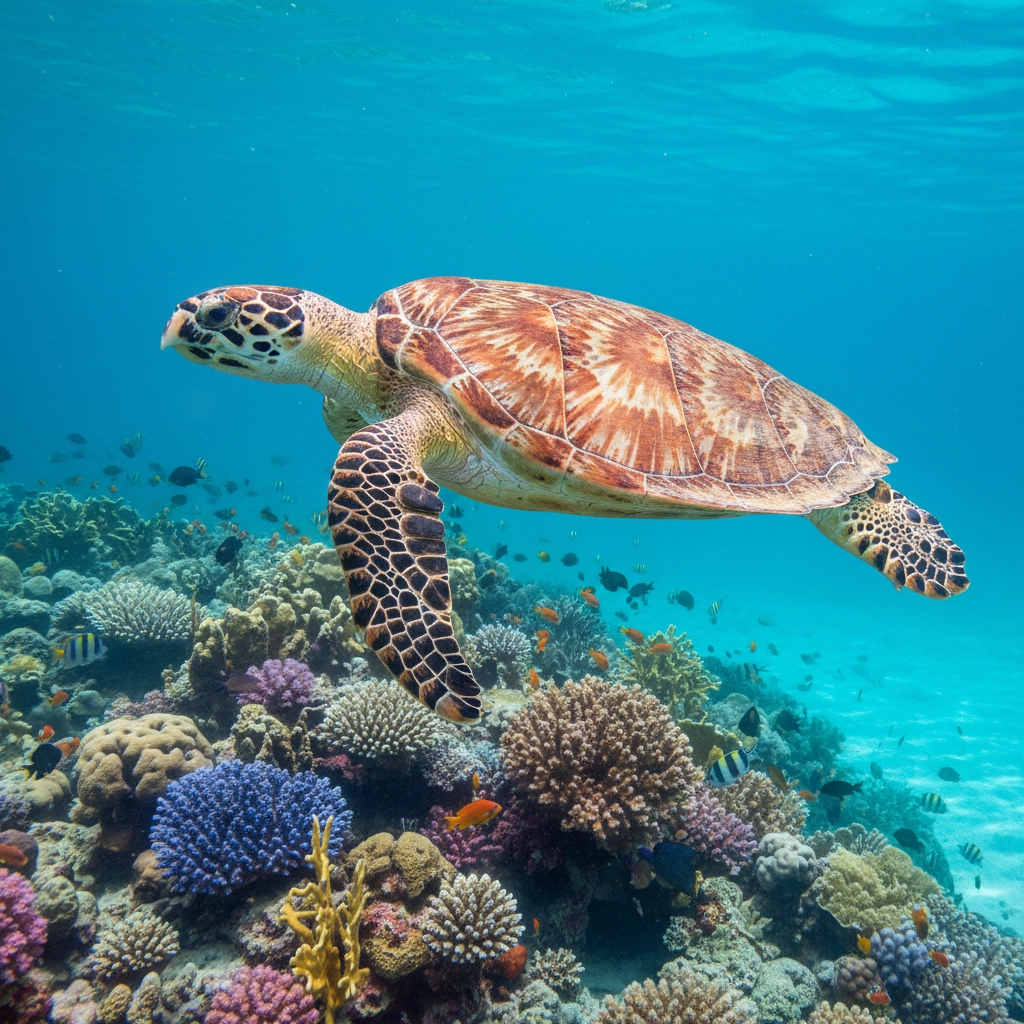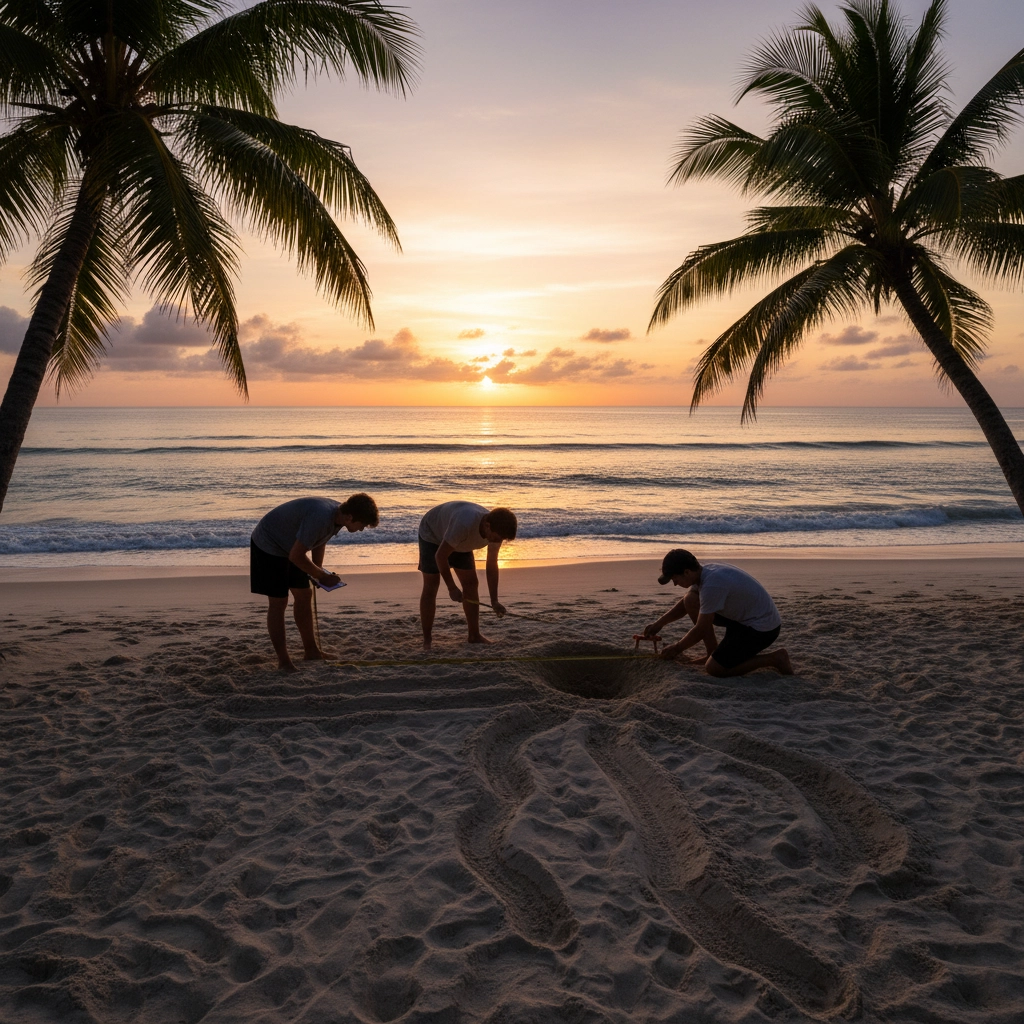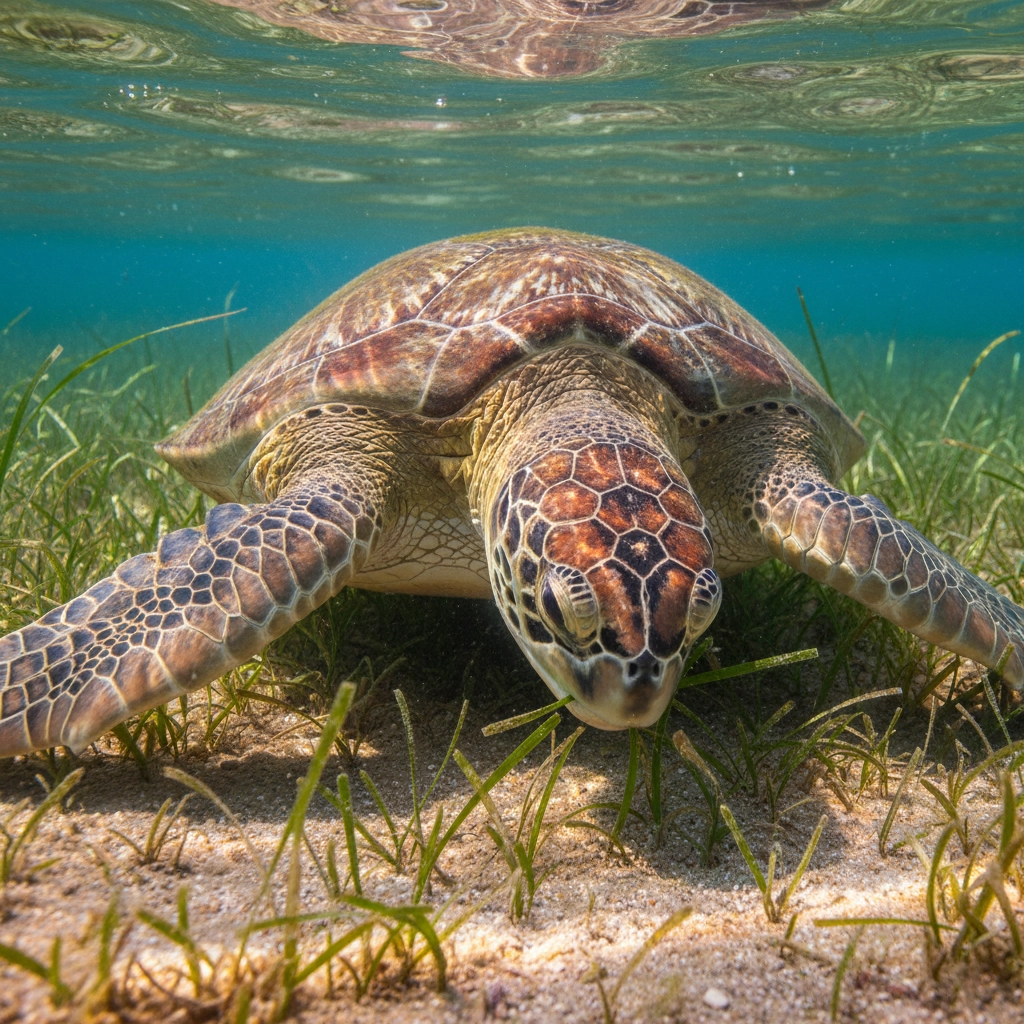Sea Turtles of the Florida Keys: Species and Conservation Status
- Caleb Mullenix
- Oct 19
- 6 min read
Understanding marine conservation through direct observation of endangered species provides students with unparalleled learning opportunities that transform abstract scientific concepts into tangible, meaningful experiences. The Florida Keys serve as one of North America's most critical sea turtle habitats, hosting five of the world's seven sea turtle species: all of which are protected under the U.S. Endangered Species Act. For educators seeking to provide students with authentic marine biology field experiences, these waters offer exceptional opportunities to study conservation biology, species recovery, and ecosystem interdependence in action.
Appleseed Expeditions has developed comprehensive marine science programs that enable students to participate directly in sea turtle research and conservation efforts while gaining deep understanding of marine ecosystem dynamics. These educational experiences prepare students to become informed environmental stewards while providing hands-on application of scientific methodology and data collection techniques.
The Five Species: A Living Laboratory for Conservation Science
The Florida Keys marine ecosystem supports loggerhead, green, hawksbill, Kemp's ridley, and leatherback sea turtles, each representing different conservation challenges and recovery success stories. Students participating in Appleseed Expeditions marine biology programs observe these species in their natural habitats while learning to identify distinguishing characteristics and understand their ecological roles.
Loggerhead Sea Turtles represent the most commonly encountered species in Keys waters, providing students with consistent observation opportunities. These robust turtles, listed as threatened under federal law, demonstrate successful conservation recovery when students witness their nesting behaviors at monitored beaches. Students learn to measure carapace length, document nesting activities, and understand how legal protections have enabled population stabilization.
Green Sea Turtles, classified as endangered, offer students compelling lessons in historical population decline and modern recovery efforts. Historical records indicate the Caribbean basin once supported approximately 660 million green sea turtles before industrial-scale harvesting reduced populations to mere tens of thousands. Students observe current populations in seagrass foraging areas, understanding how habitat protection and fishing regulations have enabled gradual population recovery.

Hawksbill Sea Turtles provide students with opportunities to study critically endangered species recovery. These distinctive turtles, recognizable by their beak-like mouths, demonstrate how targeted conservation efforts can stabilize populations of species once considered nearly extinct. Students learn to identify hawksbills by their overlapping scutes and understand their role in maintaining coral reef health through sponge consumption.
Kemp's Ridley Sea Turtles, the world's most endangered sea turtle species, offer students profound lessons in conservation urgency. These relatively small turtles, measuring approximately two feet in length and weighing 70-108 pounds, represent both conservation challenges and remarkable recovery achievements through international cooperation and dedicated protection efforts.
Leatherback Sea Turtles, the largest of all sea turtle species, provide students with opportunities to understand deep-ocean ecology and migration patterns. These remarkable creatures, listed as vulnerable, demonstrate how marine conservation must address both coastal and pelagic habitats to ensure species survival.
Critical Habitats for Student Research and Observation
Dry Tortugas National Park, located 70 miles west of Key West, serves as the most active sea turtle nesting site in the Florida Keys and provides exceptional opportunities for student research participation. Park Service biologists have conducted daily nesting surveys since 1980, creating comprehensive datasets that students can analyze and contribute to during Appleseed Expeditions programs.
Students participate in dawn patrol surveys across the park's seven islands, documenting turtle crawls, measuring nest sites, and recording environmental data. Over recent seasons, more than 2,330 loggerhead and green turtle crawls have been documented across just three miles of beach, providing students with abundant research opportunities and statistical analysis projects.
The Key West National Wildlife Refuge offers students access to critical foraging habitats where vessel-based surveys document thousands of sea turtles across diverse habitat types including seagrass beds, hard-bottom communities, and fringing reefs. Students learn to conduct population surveys, identify different life stages from juvenile to adult, and understand how habitat diversity supports species recovery.
Hands-On Conservation Learning Through Direct Participation
Appleseed Expeditions marine biology programs enable students to participate directly in ongoing conservation research projects, transforming passive observation into active scientific contribution. Students work alongside marine biologists to conduct standardized surveys, collect biological samples, and maintain long-term monitoring databases that inform conservation management decisions.
Nesting Beach Monitoring provides students with opportunities to participate in nighttime patrols during peak nesting season, documenting female turtle emergence, measuring carapace dimensions, and recording GPS coordinates for nest sites. Students learn proper handling techniques, data collection protocols, and the importance of minimizing human disturbance during critical reproductive behaviors.
Satellite Tracking Projects enable students to assist in attaching tracking devices to nesting females, learning how modern technology provides insights into migration patterns, foraging areas, and inter-nesting behavior. Students analyze tracking data to understand how sea turtles navigate across ocean basins and return to specific nesting beaches.

Habitat Assessment Activities teach students to evaluate seagrass bed health, coral reef condition, and water quality parameters that directly impact sea turtle survival. Students learn to use scientific instruments, collect water samples, and document habitat characteristics using standardized monitoring protocols.
Student Research Opportunities and Scientific Methodology
Educational expeditions with Appleseed provide structured opportunities for students to conduct original research projects while contributing to ongoing conservation science. Students develop research questions, design data collection protocols, and analyze results using professional scientific methodologies.
Population Monitoring Projects enable students to participate in long-term datasets, learning how consistent data collection over multiple decades reveals population trends, nesting success rates, and conservation program effectiveness. Students calculate nest density, hatching success percentages, and analyze environmental factors affecting reproductive success.
Behavioral Studies provide opportunities for students to document foraging behaviors, social interactions, and habitat preferences through systematic observation techniques. Students learn to minimize observer bias, maintain consistent data collection standards, and recognize individual turtles through natural markings and tagging systems.
Threat Assessment Research enables students to document and quantify human impacts including plastic pollution, fishing gear entanglement, and coastal development effects. Students collect debris samples, document injury frequencies, and understand how scientific data drives policy recommendations and management decisions.
Educational Impact and Conservation Awareness Development
Participation in sea turtle conservation research provides students with transformative learning experiences that extend far beyond traditional classroom instruction. Students develop deep appreciation for marine ecosystem complexity while gaining practical experience in scientific methodology, data analysis, and conservation biology principles.
Students learn to understand how individual species protection contributes to broader ecosystem health, recognizing sea turtles as indicator species that reflect overall marine environment condition. Through direct observation of conservation success stories, students understand how dedicated scientific research, legal protections, and community engagement can reverse species decline and enable population recovery.
Data Analysis Skills develop through participation in real scientific research, enabling students to calculate population trends, evaluate conservation program effectiveness, and understand statistical significance in biological datasets. Students learn to present research findings, create scientific graphs, and communicate conservation messages effectively.
Environmental Stewardship Values emerge through direct participation in conservation activities, enabling students to understand their personal connection to marine ecosystem health and species survival. Students develop lasting commitment to environmental protection through meaningful engagement with conservation science.

Planning Your Marine Biology Expedition: Essential Preparation Steps
Successful sea turtle conservation expeditions require careful preparation to maximize educational opportunities while ensuring student safety and meaningful research participation. Appleseed Expeditions provides comprehensive support for educators planning marine biology programs that combine rigorous scientific methodology with transformative student experiences.
Pre-Trip Preparation involves familiarizing students with sea turtle biology, conservation status, and identification characteristics through classroom instruction and interactive materials. Students should understand basic marine ecology principles, endangered species legislation, and current conservation challenges before participating in field research activities.
Safety Protocols and Environmental Responsibility require thorough preparation for marine environments, including sun protection, proper footwear for beach surveys, and understanding of wildlife interaction guidelines. Students must understand how to minimize disturbance to nesting females, maintain appropriate distances during observations, and follow established research protocols consistently.
Research Skills Development benefits from advance preparation in data collection techniques, scientific observation methods, and basic statistical analysis. Students should practice using field equipment, understand measurement techniques, and learn proper data recording procedures before participating in active research projects.
The Florida Keys sea turtle populations represent remarkable conservation success stories that provide students with hope and inspiration while demonstrating the effectiveness of dedicated scientific research and species protection efforts. Through participation in Appleseed Expeditions marine biology programs, students gain firsthand understanding of conservation biology while contributing meaningfully to ongoing research that ensures these ancient mariners continue to thrive in our oceans for future generations to study and protect.
For educators seeking to provide students with authentic research experiences that combine rigorous scientific methodology with profound conservation education, sea turtle studies in the Florida Keys offer unparalleled opportunities to inspire the next generation of marine biologists and environmental stewards.



Comments